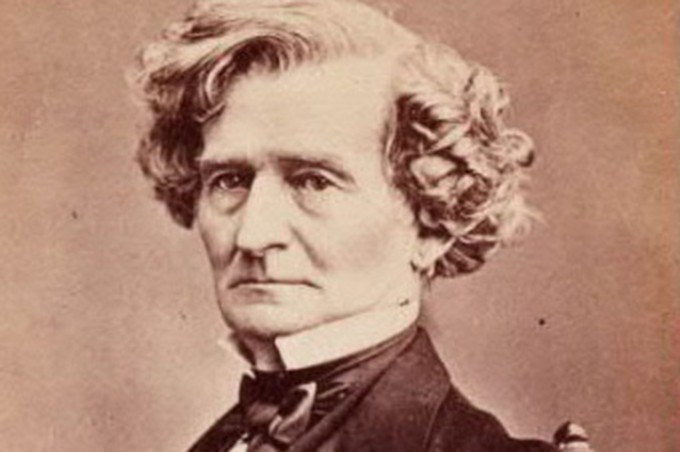23 November 2023
P.R. Jenkins
Spotlight Berlioz: “Symphonie fantastique” and more

Being one of the great “Orchestererzieher (orchestra trainers)” of his time, it is no wonder that Karajan had a constant and inspired predilection for the works of the exceptional orchestrator Hector Berlioz.
Berlioz’ most popular work is the “Symphonie fantastique”, one of the ground-breaking works of romanticism though written only two years after Beethoven’s death. The symphony had a tremendous influence on programme music and the development of modern orchestration in the works of Liszt, Wagner and Richard Strauss. The work is subtitled “Episode in the Life of an Artist” and tells the “darkly romantic” story of an artist who perishes in a demonic maelstrom of madness, horror and drugs after being betrayed by a woman. In it, Berlioz came to terms with his own tragic love story with the actress Harriet Smithson, and he was not yet 27 years old when the symphony was first performed in Paris. It is truly innovative in terms of form, orchestration and duration. Divided into five parts (like a five-act drama) for an orchestra featuring cornets, harps, bells and divided strings, it is much longer than most of the symphonies of Berlioz’ predecessors (apart from Beethoven’s 9th and Schubert’s “Great”).
Karajan started performing the symphony in his Aachen years. After the war, it was a keystone of his repertoire with the Philharmonia Orchestra. They recorded it in 1954 and played it ten times in the 1950s – including their 1955 tour of America. From 1964 on, he interpreted it regularly with the Berlin Philharmonic and recorded it twice in the studio. The stylish concert film by Roger Benamou with Karajan conducting the “Symphonie fantastique” in 1971 is one of the few documents of his collaboration with the Orchestre de Paris.
“La Damnation de Faust” is an unusual interpretation of the German national drama by Goethe. It is a vocal work, but not particularly conceived as an opera, more like a mixture of choral symphony, oratorio and number opera. Berlioz himself called it a “dramatic legend” and used the text more as an inspiration than for a setting or translation. He included his adaptation of the traditional Hungarian “Rákóczy March”, more or less for the sole reason that it was a success in Budapest the year before. The first performance of the two-hour “La Damnation de Faust” in 1846 was a complete failure and plunged the 42-year-old composer into a personal crisis. The complete work is not standard concert repertoire but three orchestral pieces are regularly performed: The “Dance of the Sylphs”, the “Minuet of the Will of the Wisps” and the “Rákóczy March”. Karajan recorded the dance and the minuet only once in 1971, the march three times between 1958 and 1979. Watch the film version at the 1978 New Year’s Eve Concert in Berlin.
The overture “Roman Carnival” and the orchestral music “Royal Hunt and Storm” from the opera “Les Troyens” were also very much the preserve of the Philharmonia Orchestra in the late 1950s.


